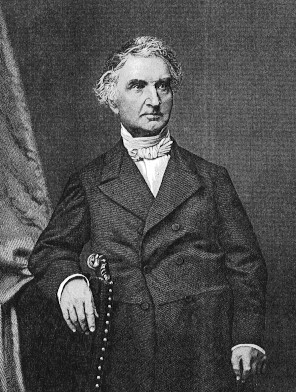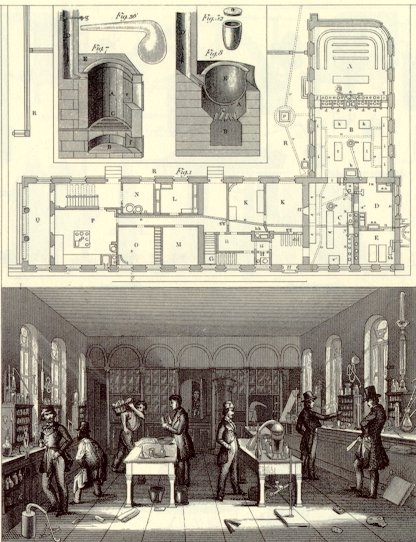Justus von Liebig
Today, we create the first research laboratory. The University of Houston's College of Engineering presents this series about the machines that make our civilization run, and the people whose ingenuity created them.
Long ago I wrote a master's thesis on the properties of a chemical called aniline. That was an exciting time. I'd never heard of aniline, but I learned that it was a dye base and that it might make a good rocket fuel. I also had to learn how to find data in a German periodical called Liebig's Annals of Chemistry. It'd be another twenty years before I learned the remarkable way Liebig's life was interwoven with the aniline I was studying.
Baron Justus von Liebig was born in Darmstadt in 1803. He took up chemistry when he was seventeen. When he was twenty, he went to Paris for a year to study with the famous French chemist Gay-Lussac. Gay-Lussac opened his eyes to the new idea that we'd need accurate experiments to make sense of chemistry.
Liebig came back to a post at the University of Giessen in Germany. There he turned his young man's enthusiasm on Gay-Lussac's ideas. He worked single-mindedly to set up a chemical research laboratory. He had to spend his own salary on equipment. By 1827, Liebig had a twenty-man operation, the likes of which the world had never seen.
Liebig is honored for his work in organic, pharmacological, and agricultural chemistry. But this laboratory was his greatest contribution. Other chemists had to copy it to keep up with him. It was the first systematic research laboratory, and it changed our thinking. Before Liebig, research was an amateur's game. Now it was being put into the hands of a new breed of professionals.
And there's more to the story. In 1843, one of Liebig's former students sent him an oil he'd isolated from coal tar. The lab found a compound in it that reacted with nitric acid to make brilliant blue, yellow, and scarlet coloring agents. It was a compound Liebig had already anticipated, a form of benzene with one hydrogen atom replaced by an amino group. They named it aniline.
By 1860 Germany had built a new dye industry, beginning with aniline. That dye industry, in turn, helped to carry Germany into world leadership in industrial chemistry. And, while their leadership owed much to Liebig's ideas about chemistry, it owed far more to his vision of systematic research, invention, and development.
So, while the Germans were setting up their dye industry, Edison, Bell and many others created their own versions of Liebig's laboratory here in the United States. By the end of the nineteenth century, the research and development laboratory was altering the face of America even faster than it'd altered Europe.
Thus our very concept of systematic research emerged in the age-old process of transmutation that has to occur between students and teachers. Justis von Liebig learned much from the great chemist Gay-Lussac. But it was in the process of turning that knowledge around in the light, and making it into something wholly new, that Liebig altered human history.
I'm John Lienhard, at the University of Houston, where we're interested in the way inventive minds work.
(Theme music)
Holmes, F. L., Liebig, Justus von. Dictionary of Scientific Biography, Vol. 8. New York: Charles Scribner's Sons, 1973, pp. 329-350.
The Liebig Museum in Giessen maintains an excellent website with more on Liebig and the history of his laboratory.
This is a revised version of Episode 185.

The Baron Justus von Liebig
From an obituary ca. 1873, source unknown
Click on the thumbnail above to see an old engraving of Liebig's lab and its floor plan.
